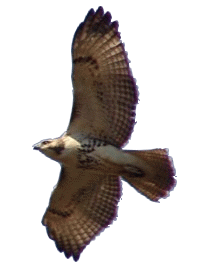|
So it is cold and dark and snowy. All the flowers are long gone and most plants are dormant. Does that mean nothing is happening in Nature?
Herbaceous plants: All are dead, their life as individuals are over. The species live on only in their seeds. And many animals are out searching out and gobbling down as many of these nutritious goodies as they can find.
Perennial plants: If they are deciduous, they have shed their leaves. The struggle now is to survive long periods without liquid water, and to avoid being broken by the weight of frozen ice and snow. Short days and long nights will keep most dormant until spring.
Cold-blooded Animals: Cold-blooded animals have it easy in winter. Like most perennial plants they go dormant. Many find over wintering sites below the frost line and hibernate. Some find hiding places and freeze solid. Plants get rid of most of their water and so do not have a problem with freezing. Some frogs are known to produce an anti-freeze compound to prevent cell moisture from freezing and ripping their cells apart as the water expands on freezing. Many of these will be ready to break dormancy at the first warm spells in spring. Some cold-blooded animals are even active on warm days in mid winter Who? Take a guess: a snake, a frog, a turtle, or maybe an insect? (two correct answers!) |
|
Birds (really warm-blooded animals, but who's counting?): Some migrate south for the cold months, but some migrate south - to our latitudes - to take advantage of our warm (burrrr) winters. Some (Humming birds, Nightjars) wintering in areas south of us go dormant during the coldest periods. Many species - our year round residents - change their habits and food sources and do fine all winter. Chickadees, Downy Woodpeckers, Nuthatches, Goldfinches and Tufted Titmice fall into this category. They often form mixed flocks and forge in together in small groups.
Ducks are weird. Many (Blacks, Gadwall, and Mallards) engage in courtship as they arrive on wintering grounds in fall and form pairs that last all winter. Males can be seen chasing females and each other most of the winter. They will follow the females to the breeding grounds and abandon them as soon as eggs are laid. Other ducks postpone courtship to later in the winter. Buffleheads should be courting seriously and pairing up by the end of the month. Other species such as Canvasbacks, Scaup, and Common Mergansers form huge flocks and do not form pairs until they get to the breeding grounds. |
|
Red-tailed Hawks are the commonest resident hawk in
our area, and their winter strategy is somewhat more complex. They often
abandon their breeding areas when there is persistent deep snow. In
recent years, however, this has not happened, and they have been spending
their January's engaged in territorial defense and courtship. If you are
observant (and lucky) you will occasionally find a pair of red-tails
sitting side by side on the same branch. This is a sure sign of courtship
and a mated pair. GHOWs will do this as well, but they are much harder to
find at night. In all species of raptors the males defend and define the
breeding territory at the beginning of the breeding season. Females
choose their mates on the basis of the quality of the territory. They
defend the territory only against other females. It is not unusual for
the females to abandon breeding territories in periods of bad weather, but
the males hang on longer. In species that migrate, males always migrate
earlier, and set up territories.
Just south of us, in NJ, Bald Eagles have divided up their habitat into territories, completed courtship rituals, and are busily building nests.
February will be even busier, so stay tuned! |
